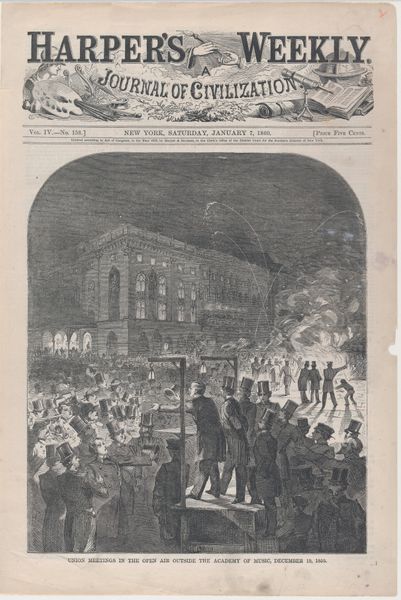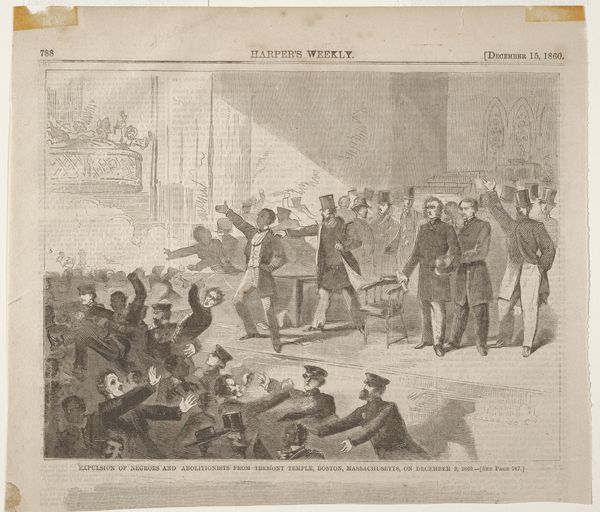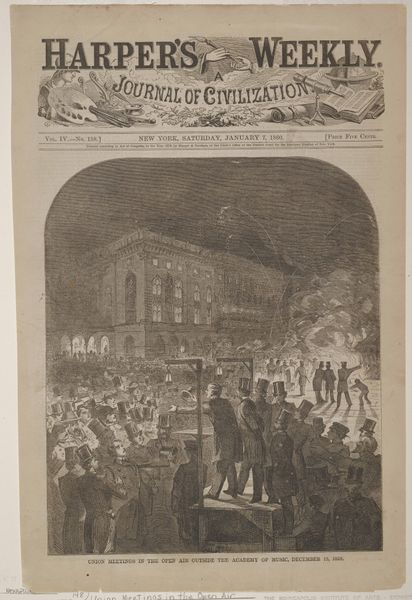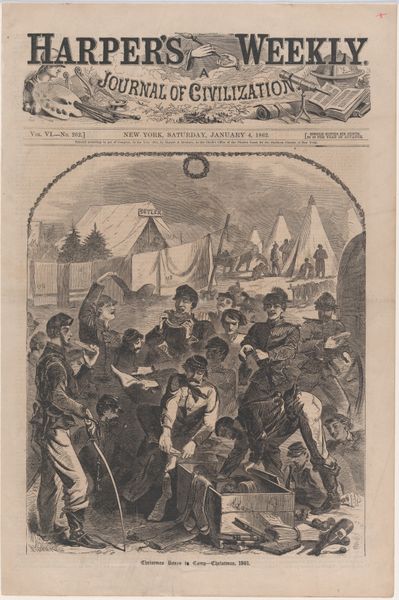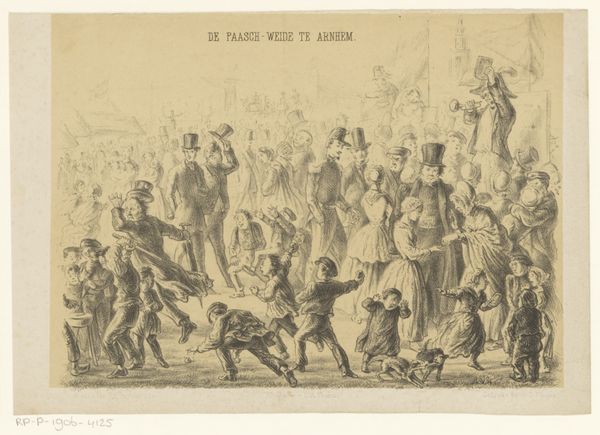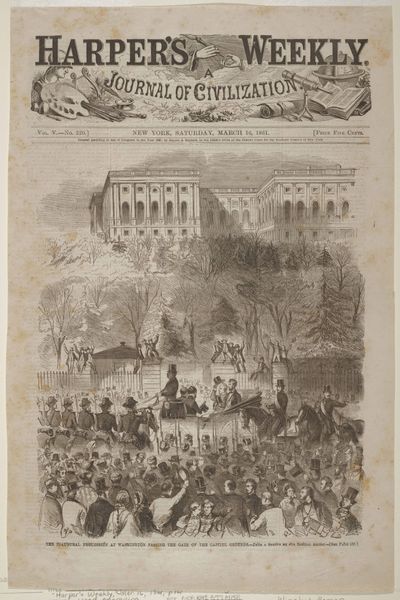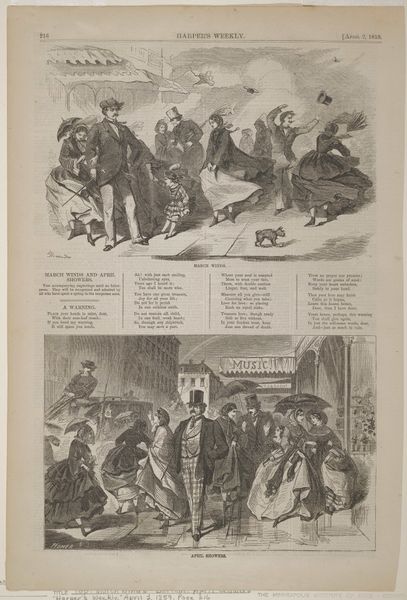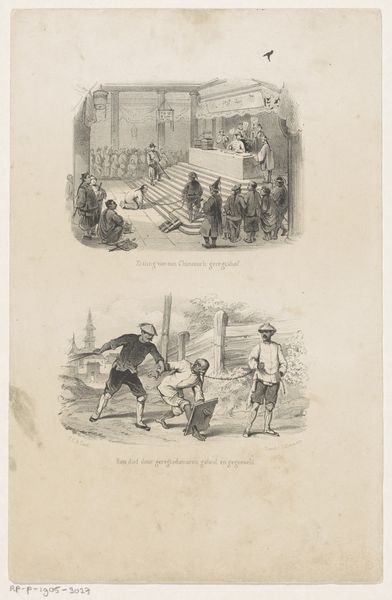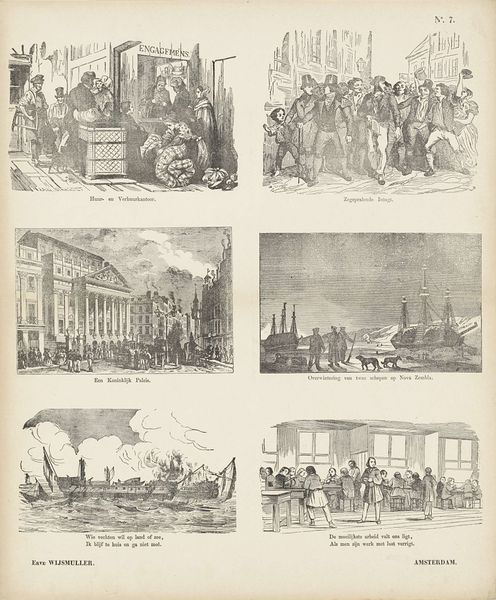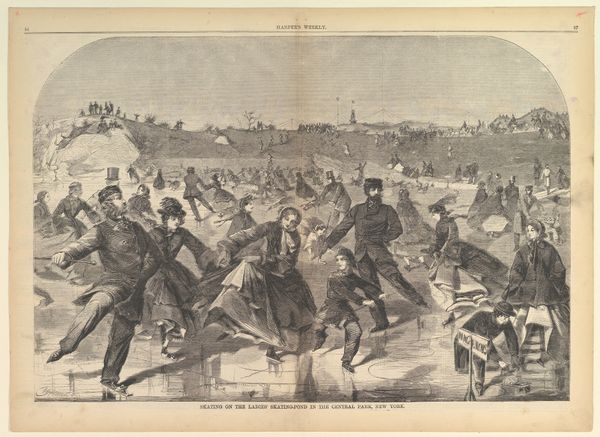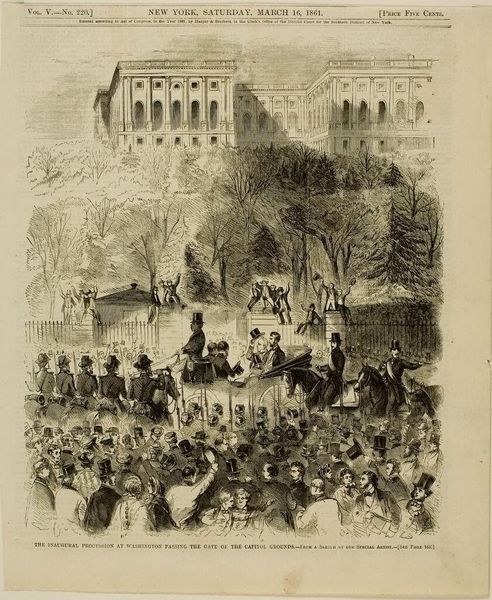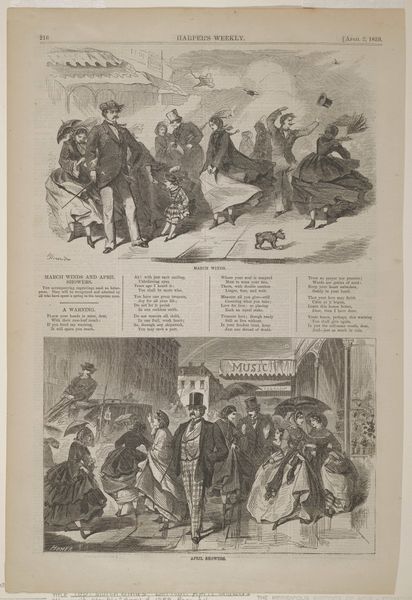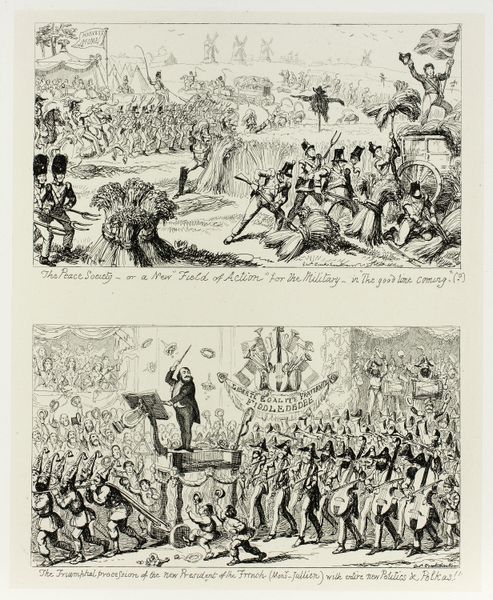
Expulsion of Negroes and Abolitionists from Tremont Temple, Boston, Massachusetts on December 3, 1860 c. 1860
0:00
0:00
drawing, print, paper, engraving
#
drawing
#
narrative-art
# print
#
paper
#
united-states
#
cityscape
#
history-painting
#
northern-renaissance
#
engraving
#
realism
Dimensions: 175 × 233 mm (image); 400 × 274 mm (sheet)
Copyright: Public Domain
Editor: Here we have Winslow Homer's engraving, “Expulsion of Negroes and Abolitionists from Tremont Temple, Boston, Massachusetts on December 3, 1860,” created around that same year. It's quite striking how chaotic the upper scene feels, especially compared to the more orderly one below. What jumps out at you when you look at this work? Curator: It throws you right into the heart of the matter, doesn't it? It feels like a snapshot ripped straight from a turbulent moment, that uneasy blend of moral outrage and, let's be frank, sheer ugliness of prejudice. I’m wondering: do you feel any sort of resonance between the two scenes depicted, even if they’re seemingly unrelated events? Editor: I suppose both show a kind of mobilization… one expelling people, and the other deploying them? Almost opposite sides of the same coin. But the body language is so different! The expulsion feels panicked, violent. Curator: Exactly! And Homer, I think, captures that duality brilliantly. The jostling, the shoving, the sheer… disregard for human dignity in the upper panel. Then, juxtapose that with the organized departure, the waving flags – a visual display of, ostensibly, civic virtue. But is it really? Doesn't it feel staged, almost propagandistic, in its neatness? Like, “Look at us, doing our duty,” while injustice festers elsewhere. Does the "duty" apply to all? Editor: I see what you mean. It's like Homer is subtly questioning the whole narrative. Making us ask, "Whose duty, and at whose expense?" Curator: Precisely! And that's the enduring power of art, isn't it? To hold a mirror to ourselves, to force us to confront uncomfortable truths, to invite critical inquiry and not settle with face value. The chaos upstairs echoes that the departure downstairs is an act of forced segregation. This picture’s loud! What do you take from this as a budding Art Historian? Editor: I think it shows me that even seemingly straightforward historical depictions can be incredibly layered and full of implied social commentary. It makes me want to dig deeper. Thanks!
Comments
No comments
Be the first to comment and join the conversation on the ultimate creative platform.
